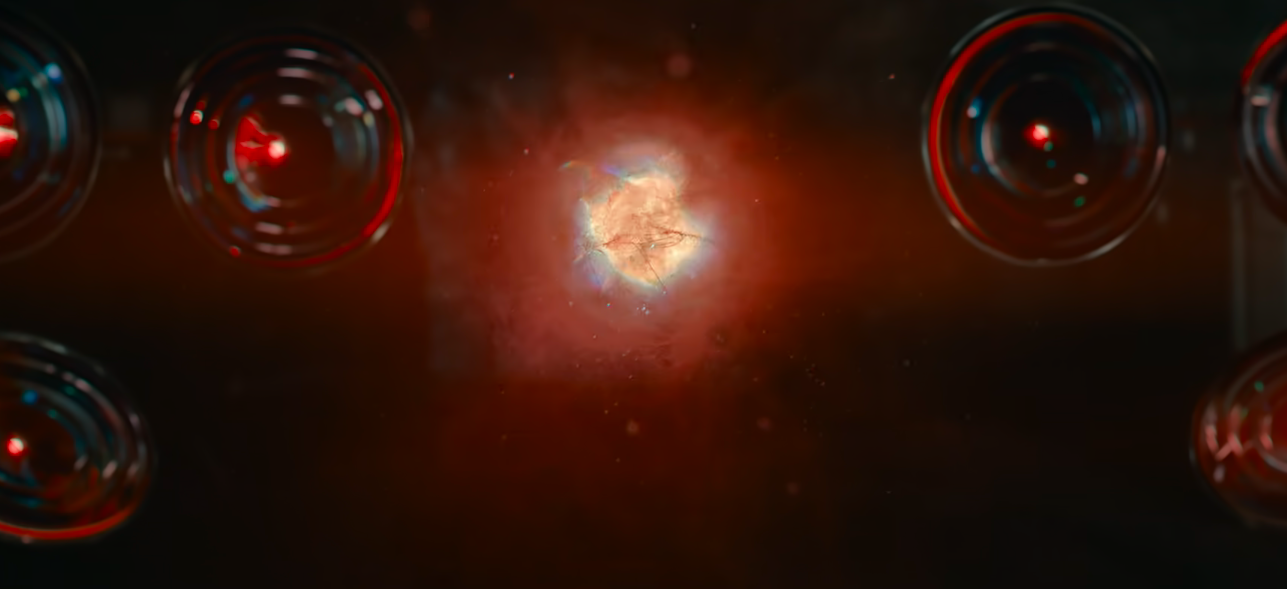In Netflix’s ‘Bodies,’ time travel becomes the key to solving the mystery of a murder that spans four different timelines. Any story that tackles the concept of time travel must lay down its rules to give the audience a clear grasp of what is and isn’t possible in its world. Because time travel isn’t possible in the real world (yet!), writers often come up with fictional concepts that usually fall under the umbrella of quantum physics to explain how it’s possible for people to go back and forth in time.
‘Bodies’ creates its own science to explain time travel and throws around some terms that may or may not be scientific. One of those terms is “the Deutsch Particle,” which is then used to create a time machine called the Throat. Here’s a complete breakdown of these terms and how they become instrumental in the plot of the Netflix series. SPOILERS AHEAD
The Deutsch Particle is Not Real But References a Real Scientist

The Deutsch Particle is referenced in ‘Bodies’ in the 2053 timeline, where scientist Gabriel Defoe talks about it in a lecture at the university. He mentions that the study of the particle would have had them called “pariahs, outcasts, morons” thirty years ago, referring to the 2023 timeline. Then, he ties the Deutsch particle with naked singularity to create two particles that go forward and backward in time simultaneously. This is all, of course, theoretical. But later, it turns out that he has turned it into a practical time machine he calls the Throat.
While “naked singularity” might be a real term (though not a real thing because it hasn’t been observed as of yet), the Deutsch particle mentioned in the show is not real. It is most probably a reference to the University of Oxford physicist David Deutsch, who is best known for his work on quantum computation. He has also theorized a few things about time travel, particularly in reference to the grandfather paradox, which is why perhaps it felt logical for the writers to name the fictional particle after him. The scientist has also been referenced in another story featuring time travel. In ‘Avengers: Endgame,’ Tony Stark references “the Deutsch Proposition” while discussing time travel with Scott Lang and the other Avengers.
Naming the particle after a real-life scientist might bring a sense of realism to an otherwise fabricated thing, giving some credence to the time travel concept of the story and not making it feel too outlandish, preparing the audience for what comes next: the time machine.
How The Throat Functions as a Time Machine

Why it’s called the Throat is one of the mysteries ‘Bodies’ leaves for its audience to speculate, but it does give us enough to theorize how things might work. Once again, while explaining the machine and how it works, Gabriel Defeo throws around some scientific lingo but also confesses that he doesn’t quite understand the entire science behind how it might be possible. He tells Iris Maplewood that while researching the Deutsch particle, he came across “an abnormal neutrino trace,” which, when approached, leads a person to experience temporal displacement. It’s a nauseating experience for first-timers as they are forced in and out of their time, but the closer you get, the stronger its effects and the greater your chances of leaving your timeline entirely and ending up somewhere else.
The Throat has the said Deutsch particle as its core, which, when activated, is cut up in two more. As previously explained by Defeo in his class, these symmetrical particles open the door to the past as well as the future simultaneously. In theory, if one thing ends up in the future, it should also come around to land in the past with the exact time difference the future has with the present. This eventually comes into play when he time travels and shows up four days before he is shot in 2053, as well as four days after the event. The show uses this concept (most likely) from the closed timelike curves, where a particle must travel through the past and the future to close a loop around it and return to its initial state.
Once the machine is activated, a person has to walk into it to travel in time. It’s unclear how they set the time and date where they want to go, but because the show has already laid the ground for speculation by revealing that things are not set in stone in this world, one can assume for now that it has to do with a person’s intention. For example, there is no difference between Elias Mannix, Iris Maplewood, and Shahara Hasan walking into the machine. They don’t change any settings or jump from a different end. Still, they all land in different years: Mannix in 1889, Maplewood in 1890, and Hasan in 2023. Intention, hence, must be key.

It’s also clear that once a person has crossed over, they cannot travel back because there is no time machine in the past. This means that the Throat is more like a door that one crosses through rather than a device that they can carry to travel across time. It also posits that a person can only travel through it once unless they go sometime in the near past, where the machine exists or the future.
The only exception in all these cases is Gabriel Defeo, who ends up in five different days. It is most probably the doing of the bullet that hits him right when he is about to leave his timeline. The impact of the bullet creates a glitch, and much like the Deutsch particle, he is split into different versions of himself that land in four different timelines. The fifth version, which shows up four days later, is the mirror particle of the one that showed up four days before he time traveled in 2053.
With all this, the show creates a solid ground for its concepts and theories, giving the audience something concrete to hold on to, especially while nitpicking all the details strewn throughout the show, and especially that cliffhanger ending that opens the floodgates for theories and speculation.
Read More: How is Iris in 2023? Did She Travel Back in Time?


You must be logged in to post a comment.